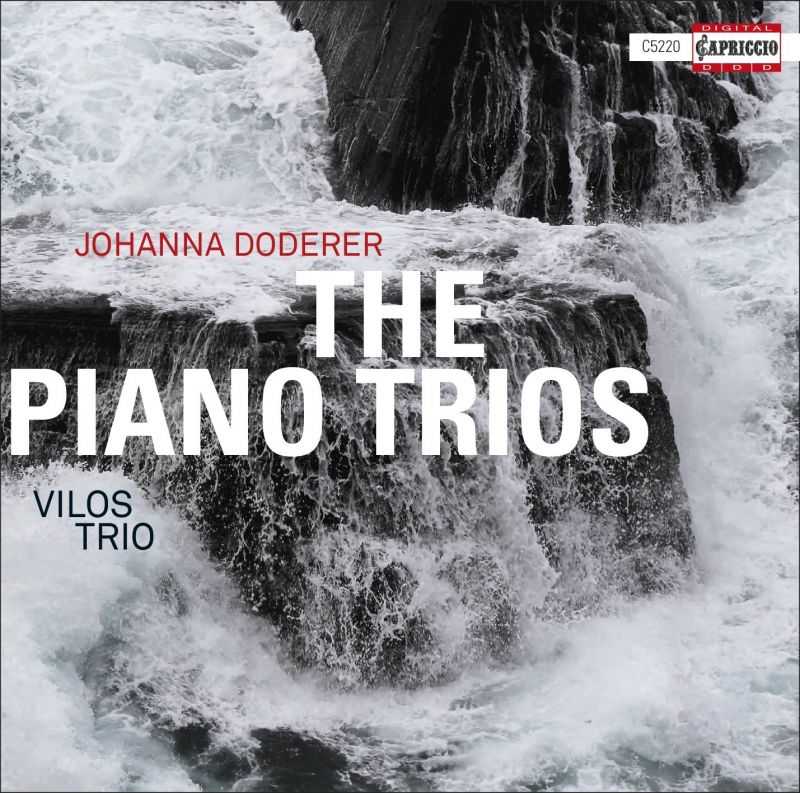DODERER The Piano Trios
View record and artist detailsRecord and Artist Details
Composer or Director: Johanna Doderer
Genre:
Chamber
Label: Capriccio
Magazine Review Date: 01/2015
Media Format: CD or Download
Media Runtime: 59
Mastering:
DDD
Catalogue Number: C5220

Tracks:
| Composition | Artist Credit |
|---|---|
| Trio for Piano, Violin and Cello No 3 |
Johanna Doderer, Composer
Johanna Doderer, Composer Vilos Trio |
| Trio for Piano, Violin and Cello No 2 |
Johanna Doderer, Composer
Johanna Doderer, Composer Vilos Trio |
| Trio for Piano, Violin and Cello No 1 |
Johanna Doderer, Composer
Johanna Doderer, Composer Vilos Trio |
| Trio for Piano, Violin and Cello No 4 |
Johanna Doderer, Composer
Johanna Doderer, Composer Vilos Trio |
Author: David Gutman
Capriccio’s non-chronological sequence begins with the Third Piano Trio, possibly the easiest to digest. Commemorating the Mahler jubilee, it contrasts mainstream post-minimalist bustle with cooler elegiac sections inspired by the sentiments of ‘Ich bin der Welt abhanden gekommen’. Its predecessor, composed for the Haydn year of 2009, put me in mind of Shostakovich at his most foursquare and academic (qv works such as the Piano Quintet). Eventually Doderer pushes into Schnittke-land, thumpiness melting away before a sweetly innocent cadence. The First Trio (2002) is closer still to Shostakovich and yet more relentless in its repetitiousness – some Górecki pieces function in much the same way. The simple/simplistic ending is inconclusive. Things loosen up in the more extended Fourth Trio (2013), where Doderer’s late-Romantic models are allowed fuller rein; once again the music stops without resolution.
One or two over-strenuous passages notwithstanding, this is a committed, spontaneous-sounding outing for the Norwegian/Lithuanian Vilos Trio, which takes its name from the players’ home towns (Vilnius and Oslo). All three would appear to be right inside the idiom. I have not heard the rival account of Doderer’s Second Trio by the Haydn Trio Eisenstadt (Capriccio, 9/09) but that is presented as part of a multi-composer Haydn-themed commissioning project and hence a rather different proposition. Given the faithful and immediate quality of the sound, this unassuming collection is certainly worth trying.
Discover the world's largest classical music catalogue with Presto Music.

Gramophone Digital Club
- Digital Edition
- Digital Archive
- Reviews Database
- Full website access
From £8.75 / month
Subscribe
Gramophone Full Club
- Print Edition
- Digital Edition
- Digital Archive
- Reviews Database
- Full website access
From £11.00 / month
Subscribe
If you are a library, university or other organisation that would be interested in an institutional subscription to Gramophone please click here for further information.




